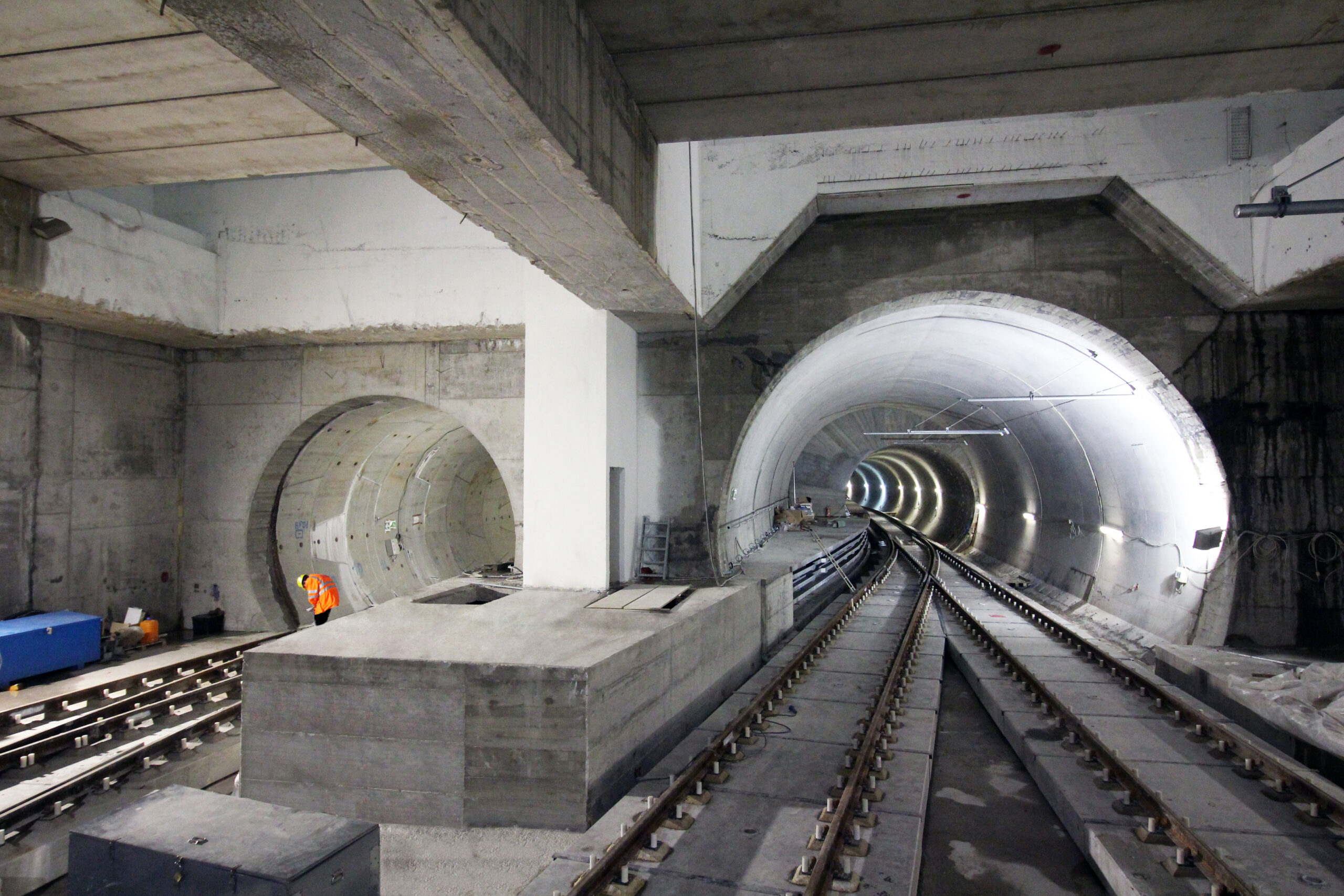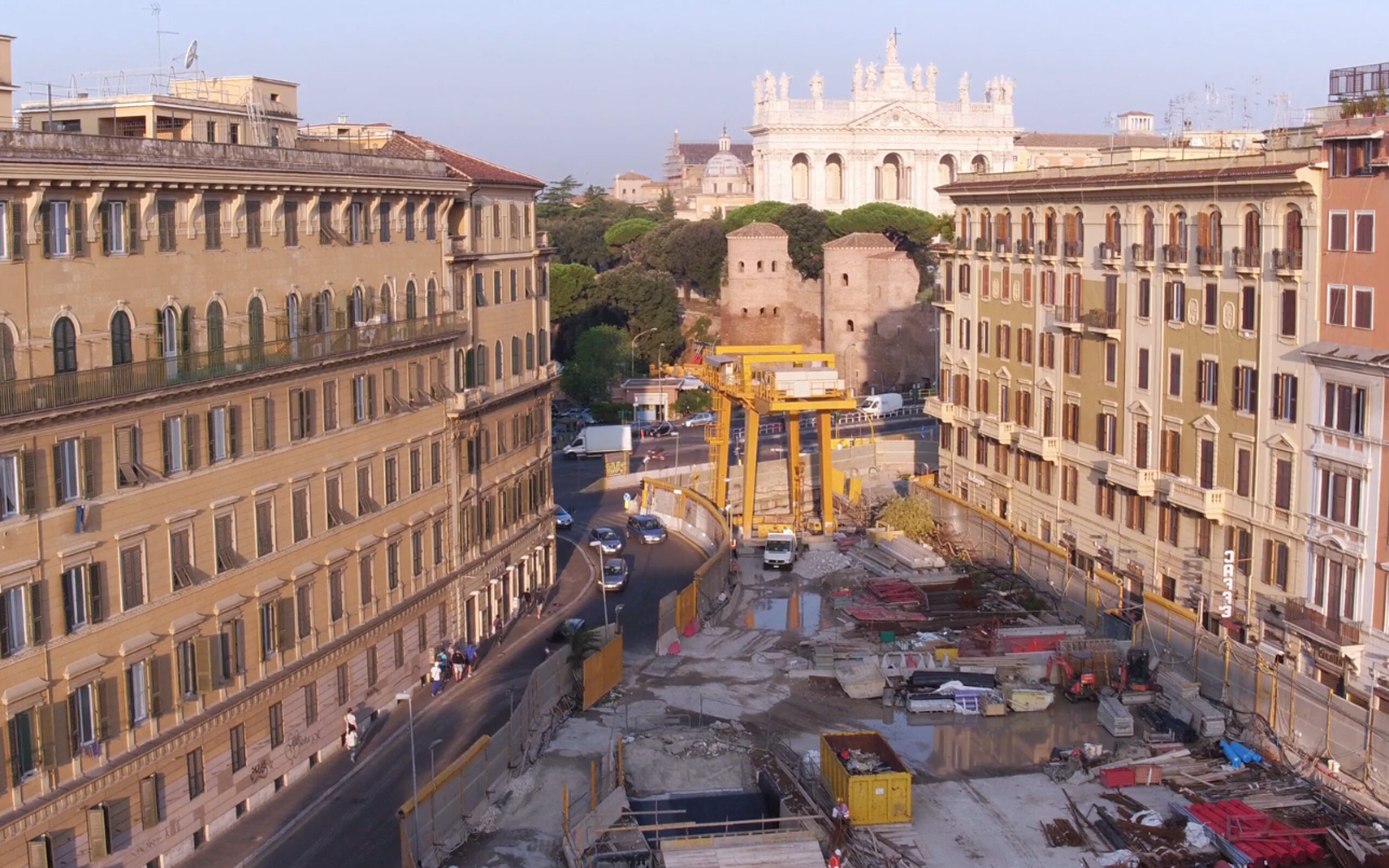On June 18, 2021, the delivery report was signed, and the work was transferred to ATAC (the line operator) through Rome Capitale for the initiation of the pre-operation phase within their competence. The handover of the Multifunctional Well 3.3 followed the pre-operation phase conducted by Metro C ScpA from April 29 to May 5, 2021. This phase allowed for the testing of the systems and obtaining all the necessary authorizations from the competent authorities. The Multifunctional Well, named 3.3, is located between the Amba Aradam/Ipponio and San Giovanni stations, adjacent to a garden area next to the historic local market of Via Sannio, on the Piazzale Appio side.
In the month of June, within the 7th edition of the International Course on Geotechnical and Structural Monitoring, promoted by the startup spin-off of Sapienza University of Rome, NHAZCA (Natural HAZards Control and Assessment), a field trip was organized, as it had been in previous years, to the Metro C Fori Imperiali construction site and the monuments adjacent to the future station, such as the Basilica of Maxentius and the Temple of Venus. The visit provided an opportunity for 25 students to directly witness the application of a complex geotechnical and structural monitoring system in Rome’s main archaeological area. NHAZCA provides consultancy and services for the analysis and monitoring of natural risks, supporting major infrastructure projects, and has been collaborating with Metro C ScpA since 2017 through classroom and field training programs.
The overall planimetric dimensions are 64.40m x 25.65m.
The iron plan varies between +8.940 and +9.120 meters above sea level (asl) inside the well. The structure consists of 3 horizontal levels:
- Technical Floor at an elevation of +25.47 meters asl (finished).
- Intermediate Floor at an elevation of +16.54 meters asl (finished). This floor serves a structural function to brace the containment structures of the structure.
- Platform Floor, at a variable elevation depending on the iron plan, ranging between +10.007 meters asl on the Amba Aradam side and +10.127 meters asl on the San Giovanni side.
The activation of well 3.3 allows for the optimal configuration of the San Giovanni terminal by adding 4 new railway switches. This enables trains on Metro C in operation to switch tracks quickly and efficiently, simplifying and speeding up the so-called “tail track reversal” of the trains. Currently, the train arriving at San Giovanni disembarks and boards passengers on the same platform before “turning back” towards Pantano.

The presence of the crossover will allow the arriving train to disembark all passengers on the platform. Using the new switches, it can then reach the opposite platform at San Giovanni for the boarding of other passengers in the direction of Pantano. To efficiently manage these switches, specific electrical equipment is located inside the well in a room called the SER (Signalling Equipment Room). This equipment is interconnected with the rest of the line and is operated from the Central Operating Post of the entire Line C located at the Graniti depot.
The presence of the new switches also increases the line’s capacity, and depending on the number of trains and the operating model used by the operator ATAC, it can achieve a headway of 4 minutes.
Well 3.3 represents the terminal of the fourth functional phase of the entire Montecompatri Pantano – San Giovanni Line (Well 3.3) and is the first well constructed in the T3 San Giovanni – Fori Imperiali section of Line C. The structure blends in with the surface arrangement of the gardens in harmony with the surrounding context. Thanks to coordination with the Superintendency, the architecture of the gardens and the entrance of the multifunctional well integrates with the presence of the Aurelian Walls, combining modern staging with the revaluation of artifacts found during excavations.


